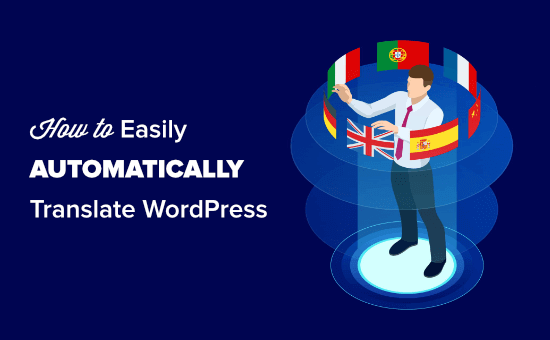The Power of Translate WordPress Posts: How to Reach a Wider Audience: In today’s globalized world, reaching a wider audience has become more important than ever. Whether you are a blogger, a business owner, or a content creator, expanding your reach beyond your native language can open up a world of opportunities. And when it comes to translating your WordPress posts, there’s no better tool than the power of WordPress itself.
Translate WordPress Posts:
Reaching a Global Audience WordPress, the widely popular content management system, offers a seamless and efficient way to Translate WordPress Posts and connect with a global audience. By translating your WordPress posts, you can break down language barriers and make your content accessible to people from all corners of the world.
The Benefits of Translate WordPress Posts:
Expand Your Reach:
By translating your WordPress posts, you can tap into new markets and reach a wider audience. This can lead to increased traffic, more engagement, and ultimately, more conversions for your website.
Enhance User Experience:
When you provide content in your audience’s native language, you create a more personalized and enjoyable user experience. This helps build trust and credibility with your readers, which can result in higher engagement and loyalty.
Improve SEO:
Translating your WordPress posts can also boost your search engine optimization (SEO) efforts. By targeting specific keywords in different languages, you can rank higher in search engine results pages (SERPs) for multiple regions, attracting more organic traffic to your website.
How to Translate WordPress Posts:
Choose a Translation Plugin:
WordPress offers a variety of translation plugins that make the translation process a breeze. Some popular options include WPML, Polylang, and Weglot. Research and select the plugin that best suits your needs. Explore various popular choices such as WPML, Polylang, and Weglot. Conduct thorough research to determine which plugin aligns best with your specific requirements.

Install and Activate the Plugin:
Once you’ve chosen a translation plugin, install and activate it on your WordPress website. Follow the plugin’s documentation or tutorials to ensure a smooth setup process.
Configure Translation Settings:
After activating the translation plugin, configure the settings according to your preferences. This may include selecting the languages you want to Translate WordPress Posts into, setting language switchers, and choosing translation methods.
Translate Your Posts:
With the translation plugin in place, you can now start translating your WordPress posts. Depending on the plugin you’ve chosen, you may have options for manual translation, automatic machine translation, or a combination of both.
Review and Edit Translations:
It’s important to review and edit the translated content to ensure accuracy and coherence. While automatic translations can be helpful, they may not always capture the nuances and context of the original text. Make sure to proofread and edit the translations accordingly.
Publish and Monitor:
Once you’re satisfied with the translated posts, publish them on your website. Keep track of the performance of these translated posts, monitor user engagement, and make adjustments as needed.
Expanding your reach and connecting with a global audience is no longer a distant dream:
With WordPress translation plugins, you can easily Translate WordPress Posts and make them accessible to people around the world. By embracing the power of WordPress translation, you can unlock new opportunities, enhance user experience, and improve your SEO efforts. So, don’t let language barriers limit your potential – start translating your WordPress posts today and reach a wider audience like never before.
Why Translating WordPress Posts is Essential for International SEOWhen it comes to reaching a global audience, international SEO is key. And if you’re using WordPress as your content management system, translating your posts is an essential step to ensure your website’s success in different markets.
Translate WordPress Posts for Global Reach:
WordPress stands as one of the world’s most widely used content management systems, driving countless websites across diverse industries Its user-friendly interface and extensive plugin directory make it a top choice for website owners looking to create and manage their online presence.
However, when it comes to international SEO, simply creating content in your native language is not enough. To truly expand your reach and engage with a global audience, it’s crucial to Translate WordPress Posts.
Benefits of Translating WordPress Posts:
Increased Visibility in Search Engines:
By translating your WordPress posts into different languages, you improve your website’s visibility in search engines. When users search for keywords related to your industry in their native language, translated content increases the chances of your website appearing in the search results.
Reach a Wider Audience:
Translating your WordPress posts allows you to reach a wider audience beyond your native language speakers. By catering to different language markets, you can tap into new demographics and expand your customer base.
Improve User Experience:
When users visit your website and find content in their own language, it enhances their overall experience. Translating your WordPress posts helps build trust and credibility, making visitors more likely to stay on your site, explore your offerings, and convert into customers.
Boost Conversions and Sales:
Studies have shown that people are more likely to make a purchase or take action when presented with information in their native language. By translating your WordPress posts, you remove language barriers and create a seamless buying experience, ultimately boosting conversions and sales.
How to Translate WordPress Posts:
Use Translation Plugins:
WordPress offers a wide range of translation plugins that can simplify the process of translating your posts. Plugins like WPML, Polylang, and Translate Press allow you to easily manage multiple languages and Translate WordPress Posts of your content with ease.
Hire Professional Translators:
For a more accurate and high-quality translation, consider hiring professional translators who are fluent in both the source and target languages. They can ensure that your content is translated accurately while maintaining its original tone and meaning.
Localize Your Content:
Translation is not just about converting words from one language to another. It’s also about adapting the content to suit the cultural nuances and preferences of your target audience. Consider localizing your content to make it more relatable and engaging for different markets.
Translating your WordPress posts is not just a good practice:
It’s an essential step for international SEO success. By reaching a wider audience, improving user experience, and boosting conversions, translating your content can take your website to new heights. So, invest in translation plugins or professional translators, and start expanding your global reach today.
The Importance of SEO for Translated WordPress Posts:
A Complete Guide In today’s digital age, having a strong online presence is crucial for businesses and individuals alike. If you’re using WordPress to reach a global audience, it’s crucial to not only focus on creating great content but also optimizing it for search engines. And when it comes to translated WordPress posts, the importance of SEO becomes even more evident. In this complete guide, we’ll delve into why SEO for translated WordPress posts is essential and how you can effectively implement it.
Why Translate WordPress Posts?
Before we dive into the importance of SEO for translated WordPress posts, let’s first understand why translating your content is so valuable. By translating your WordPress posts, you open up the opportunity to reach a wider audience. In an increasingly interconnected world, breaking language barriers can help you tap into new markets and engage with a diverse range of individuals. Translation allows you to connect with potential customers or readers who may not be proficient in your website’s default language.
The Importance of SEO for Translated WordPress Posts
Now, let’s explore why SEO is essential for translated WordPress posts. When you Translate WordPress Posts of your content, it’s not enough to simply present it in a new language. To maximize its visibility and reach, you need to optimize it for search engines. SEO ensures that your translated posts are easily discoverable by search engines and appear in relevant search results. By neglecting SEO, you risk your translated posts getting buried in search engine rankings, making it difficult for your target audience to find and engage with your content.
Implementing SEO for Translated WordPress Posts:
Now that we understand the importance of SEO for translated WordPress posts, let’s discuss how you can effectively implement it. Here are some key strategies to consider:
Keyword Research:
Conduct thorough keyword research in the target language to identify relevant search terms. Ensure that these keywords are integrated naturally into your translated content to improve its visibility in search engine results.
Meta Tags and Descriptions:
Optimize meta tags and descriptions for your translated posts. These elements provide a concise summary of your content and play a crucial role in improving click-through rates from search engine results pages.
URL Structure:
Pay attention to the URL structure of your translated posts. Use descriptive and keyword-rich URLs that accurately reflect the content of the page. This makes it easier for search engines to understand and index your translated posts.
Quality Translation:
Invest in professional translation services to ensure the accuracy and quality of your translated content. Poorly translated content can negatively impact user experience and ultimately harm your SEO efforts.
Localization:
Consider the cultural nuances and preferences of your target audience when translating your WordPress posts. Adapting your content to resonate with the local audience can significantly improve its visibility and engagement.
In conclusion, SEO plays a vital role in maximizing the potential of translated WordPress posts. By implementing effective SEO strategies, you can ensure that your translated content reaches its intended audience and achieves the desired impact. From conducting thorough keyword research to optimizing meta tags and descriptions, every step counts when it comes to SEO for translated WordPress posts. So, take the time to invest in SEO and watch your translated content soar to new heights.
